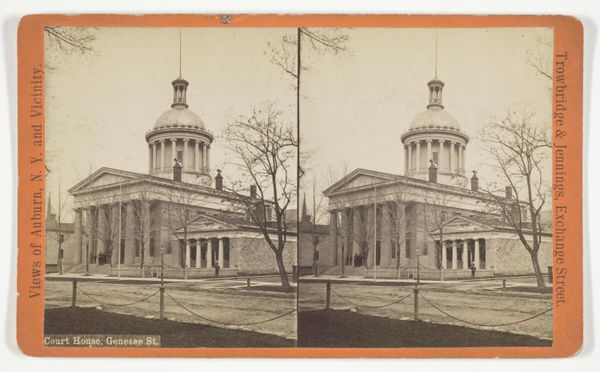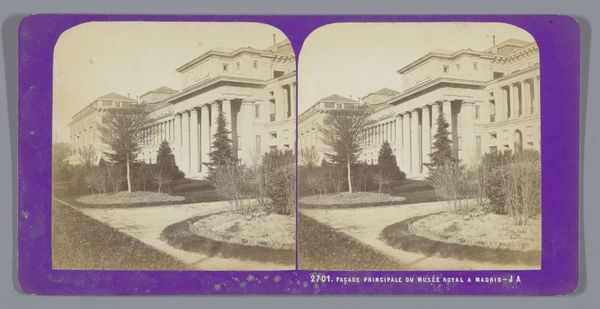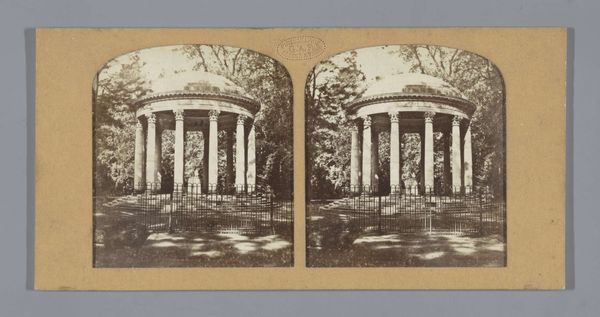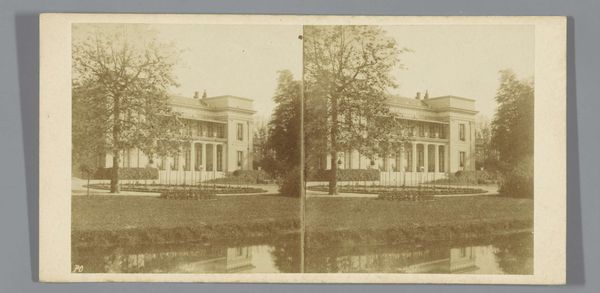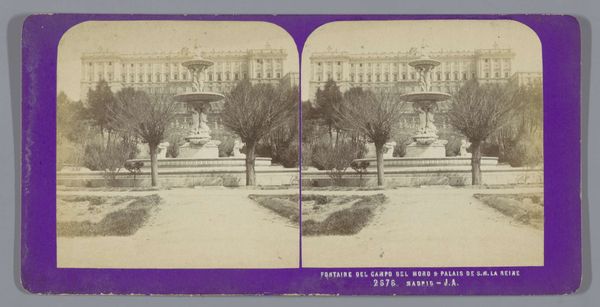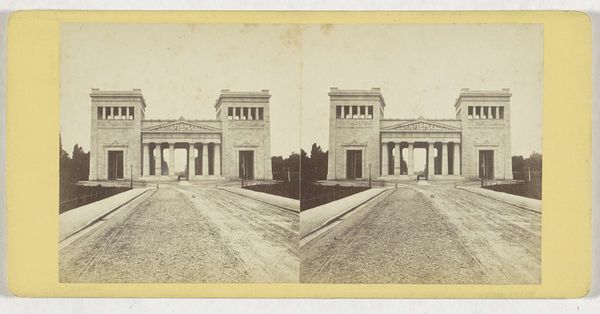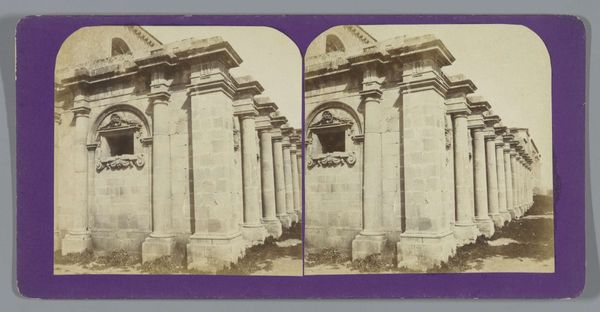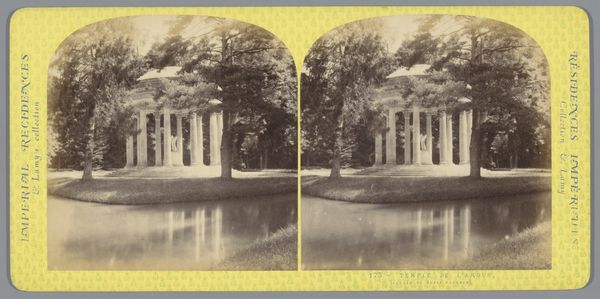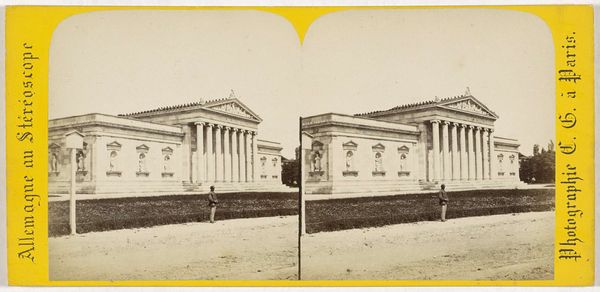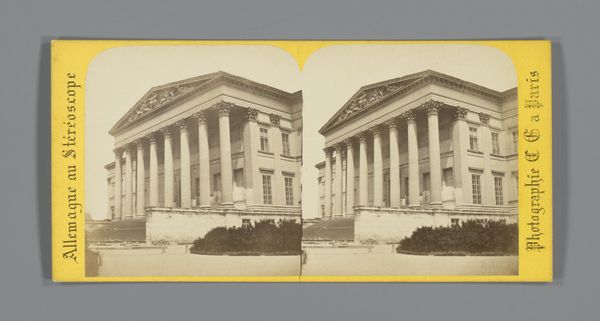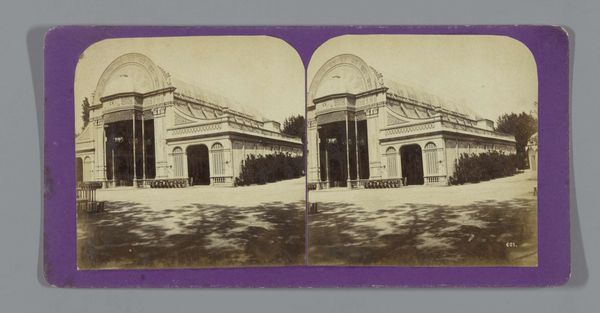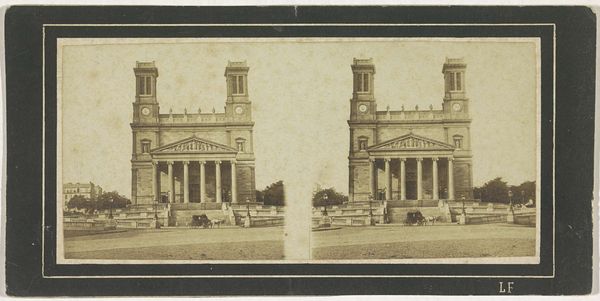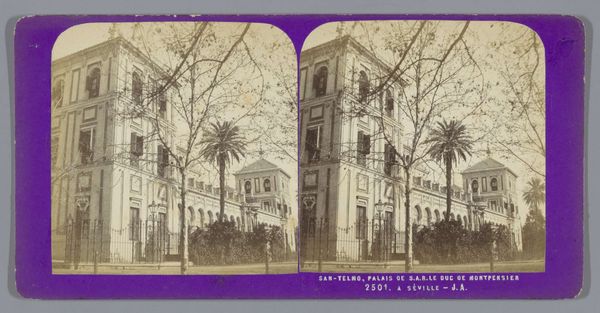
daguerreotype, photography, architecture
#
daguerreotype
#
photography
#
cityscape
#
architecture
#
realism
#
building
Dimensions: height 85 mm, width 170 mm
Copyright: Rijks Museum: Open Domain
Curator: This is a stereo daguerreotype titled "View of the Royal Observatory in Madrid," created sometime between 1862 and 1876 by Jean Andrieu. The double image gives the impression of depth, doesn't it? Editor: Yes, it feels quite monumental, even within this small format. There's a real gravitas to the image, emphasized by the stark, classical architecture atop that raised elevation. I wonder about its positioning relative to the city then? Curator: Observatories have always held powerful symbolism, literally looking outwards to chart the unknown, to grasp some understanding of existence and cosmos. I would imagine in this context it represented power and order amidst societal changes of the era. Editor: Exactly! It represents more than science; it reflects Enlightenment ideals of reason and progress being imposed—sometimes brutally—onto societies experiencing massive upheaval due to industrialization and colonization. Whose knowledge truly mattered? Curator: A fair point. Looking at the classical columns, dome, and orderly structure, one can feel how it might embody aspirations of mathematical precision or a vision for progress and knowledge. However, beyond this architectural mastery, are these bare trees emblems for a natural world in which these scientific efforts take place? Editor: Absolutely. And that severe neoclassicism itself echoes power structures, especially as astronomy often held a prestigious and well-funded position. Consider who benefited from that era's discoveries and who was further marginalized in the process. Curator: It's tempting to think of it purely in utopian terms, with scientists dedicated to seeking ultimate truths. And while such images carry meaning related to national prestige or scientific advances, one shouldn't simply discount how it fits neatly with familiar symbolic representation. Editor: It is certainly fascinating, if conflicted. The architecture makes me think of those that have held privilege for too long; here's another view looking down, both physically and figuratively. I keep returning to those stark branches reaching up as if the very scene questions that authority. Curator: And, really, images such as these give rise to continuous discussions. A snapshot, if you will, of complex beliefs at the threshold of technological advance. Editor: A threshold that we haven't moved too far away from if we truly examine whose knowledge matters to whom and why.
Comments
No comments
Be the first to comment and join the conversation on the ultimate creative platform.
